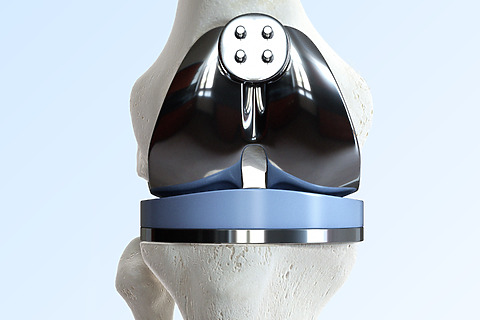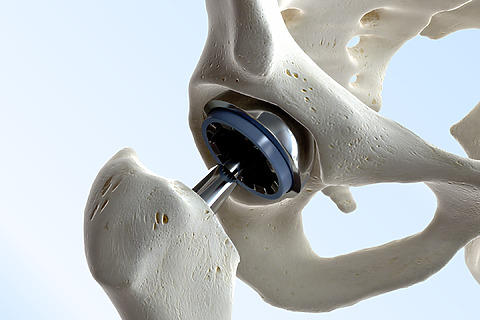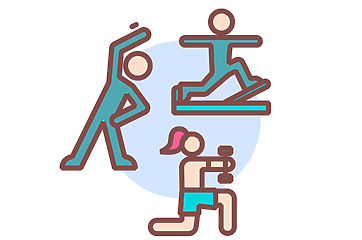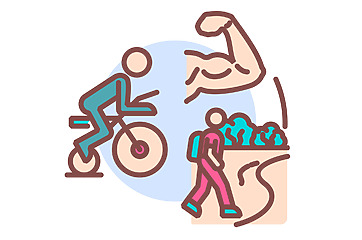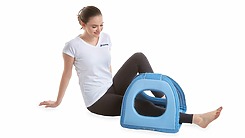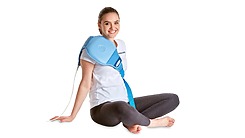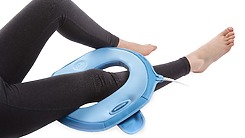Biomag - Encyclopedia - Osteoarthritis of the joints
Osteoarthritis of the joints - symptoms, description and treatment
Revision

Do you wake up every morning with painful and stiff joints? This is a typical sign of osteoarthritis. Knee, hip and hand joints may hurt. It is a degenerative disease in which the articular cartilage is damaged. It limits you in your daily life. Osteoarthritis cannot be cured, but there is a recipe for relieving the pain.
Find out what are the typical symptoms, causes of this disease. What are the treatment options for osteoarthritis? How to control symptoms such as pain, swelling and inflammation that accompany this disease? Read more here.
Symptoms of osteoarthritis of the joints
- Pain in the affected joint
- Swelling of the joint
- Joint stiffness
- Limited joint mobility
- Jerking in the damaged joint
- Scraping in the joint [1]

Only a doctor can make a correct diagnosis. Do not use this or any other article on the internet to make a diagnosis. Don’t put off seeing a doctor and address your condition early.
Description and causes of osteoarthritis of the joints
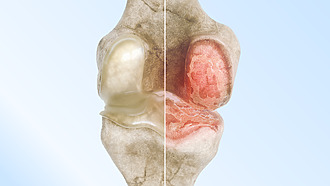
Osteoarthritis is a degenerative disease in which the articular cartilage is damaged. Cartilage gradually wears out and loses its elasticity and strength. These changes adversely affect the smooth movement of the joints and patients therefore experience pain and other problems. [2]
The term osteoarthritis is sometimes incorrectly confused with the term arthritis. Arthritis is an inflammatory disease of the joints, whereas osteoarthritis is not inflammatory in origin and is a gradual loss of articular cartilage. [3]
Osteoarthritis (hip osteoarthritis) can affect any joint in the body. The most common are osteoarthritis in the hip joint (coxarthrosis), osteoarthritis of the knee (gonarthrosis) and osteoarthritis of the shoulder joint (omarthrosis).
- The disease also affects smaller joints (ankle osteoarthritis and wrist osteoarthritis).
- Osteoarthritis of the small joints in the hands and feet is not uncommon. [4] For example, patients often develop osteoarthritis of the fingers with symptoms such as pain and swelling of the joints or osteoarthritis of the big toe, which can cause difficulty walking and a generally limited ability to maintain stability during movement.
- Osteoarthritis can also affect the spine, specifically the intervertebral joints (facet joint osteoarthritis) [5].
Causes of osteoarthritis of the joints
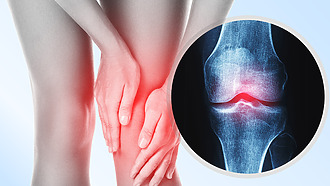
The development of osteoarthritis occurs due to wear and tear of the articular cartilage. It loses its basic properties (elasticity, strength and sufficient thickness) with long-term use and joint loading. The causes of osteoarthritis are:
- higher age,
- joint deformities,
- family history of osteoarthritis,
- injuries and joint surgery,
- excessive weight. [6]
Degrees of osteoarthritis of the joints
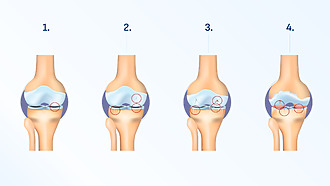
Osteoarthritis has several stages. The stages of osteoarthritis indicate the severity of the disease and each stage has its own typical symptoms.
Stage 1 – thinning of articular cartilage. (incipient osteoarthritis)
Stage 2 – the joint space narrows and bone growths form in the joint.
Stage 3 – additional bone growths appear and deformities of the joint socket and head occur.
Stage 4 – the articular cleft gradually disappears, bone growths enlarge and the joints are deformed. [7]
A practical example - osteoarthritis of the 2nd degree:
Hip osteoarthritis of the second degree is considered a mild damage to the joint. Small changes are seen on the X-ray and patients report pain after prolonged walking or running. If the joint is at rest for a long time, it may become stiff when moving. Relief can be brought by strengthening exercises, weight loss and, if necessary, painkillers. [8]
Diagnosis: how is osteoarthritis detected?
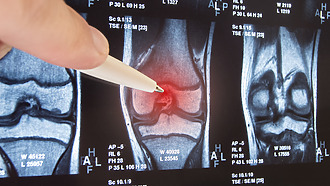
When making a diagnosis of osteoarthritis of the joints, the physician is reliant on the description of the symptoms. During the examination, the doctor also checks the joint mobility and observes if the joint is swollen or red.
- Blood tests and laboratory urine tests are part of the diagnosis.
- Patients usually undergo an X-ray examination.
- Other imaging methods are also used – ultrasound, computed tomography and magnetic resonance imaging. [9]
Did you know?
- The average age of knee replacement patients is just under 66 years. [10]
- Germany and Austria are among the leaders in the number of operations in which the hip joint is replaced with an artificial implant. An average of 174 operations per 100,000 inhabitants are performed annually. [11]
Complications of non-treatment
Untreated osteoarthritis can have several potential complications and negative impacts on quality of life.
- Worsening pain: can lead to persistent and more intense pain that limits movement and impairs quality of life.
- Mobility limitation: ongoing osteoarthritis of the joints can cause immobility and loss of flexibility.
- Joint deformity: the adverse development of osteoarthritis can lead to joint deformity, which affects joint function and aesthetic appearance.
- Psychological effects: it can limit the ability to perform normal tasks, which can lead to loss of independence and negative psychological effects such as depressed mood and anxiety.
Exacerbation of pain
Restricted mobility
Deformation of joints
Depression, anxiety

We recommend not postponing the treatment of osteoarthritis of the joints
Do not delay treatment for osteoarthritis and see a specialist if you have any health problems or doubts about your health. This will prevent unnecessary health complications.
Treatment of osteoarthritis of the joints
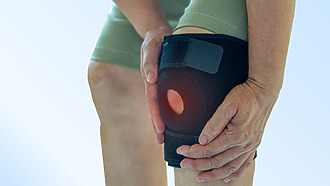
Treatment of osteoarthritis offers various options. Treatment includes the use of medication, physiotherapy, exercise or surgery. The exact procedure depends mainly on the stage of the disease. Unfortunately, there is currently no known way to stop osteoarthritis completely. But there are ways to minimise pain, promote mobility and maintain a good quality of life. [12]
- Painkillers, non-steroidal anti-inflammatory drugs or corticosteroids are used.
- Physical therapy includes the application of hot or cold compresses, electrotherapy, massage and other procedures.
- The exercise is focused on stretching and strengthening.
- Bracing and, in more severe cases, canes or walkers can be a suitable accessory (most often for osteoarthritis of the shoulder or knee or wrist).
- In the most severe cases, the solution may be surgery to replace the damaged joint with an artificial one. [13]

Beware
Treatment for osteoarthritis can only be determined by your doctor after considering your overall health. Therefore, do not use this article as a guide to treatment, which can only be determined by a doctor.
Operation
Osteoarthritis surgery is one of the treatment options. It comes into consideration especially when non-surgical methods and conservative treatment do not bring sufficient relief from symptoms. There are different types of surgery that the doctor will consider depending on the severity of the osteoarthritis and the patient’s condition.
- Arthroscopy: a minimally invasive surgical procedure that uses an arthroscope to repair and clean damaged tissue in the joint cavity.
- Arthroplasty: replacement of the affected joint with an artificial implant. The most commonly used procedure is total arthroplasty, in which damaged joint surfaces are removed and replaced with artificial substitutes.
- Osteotomy: A surgical procedure in which an incision is made or a bone is bent to change its position and reduce the stress on the joint.
- Deformity correction: surgery to correct the deformity of the joint and restore proper alignment, thereby reducing pain and improving mobility.
The surgery may be accompanied by rehabilitation to help restore the joint’s strength and mobility and facilitate a return to normal activities.
Alternative methods
There is no miracle or best cure for osteoarthritis. However, patients can try various alternative methods such as acupuncture or massage as part of their treatment. Coping with the pain that is typical of osteoarthritis can be facilitated by psychotherapy. [14]
Prevention
What to do to prevent osteoarthritis? Simply put, maintain a healthy lifestyle. While you can’t completely prevent the development of osteoarthritis, you can reduce the risk of it developing or worsening.
- Maintain a reasonable body weight. Excess weight puts a strain on the joints.
- Be active and play sports regularly.
- Don’t smoke.
- Minimise the risk of joint injuries.
- Do not overstrain the joints with inappropriate exercise or extreme movements. [15]
Principles of osteoarthritis prevention - activity, exercise and healthy lifestyle
Osteoarthritis and diet
A well-chosen diet can have a beneficial effect on the symptoms of osteoarthritis. Try to include foods in your diet that benefit bones and joints and promote the absorption of vitamins and minerals. These include dairy products, fish, leafy greens, green tea or garlic. [16]
Osteoarthritis and cinnamon
People often ask about the positive effect of cinnamon on osteoarthritis. Although it has been studied for its anti-inflammatory properties, it is important to note that the advice on its use is not supported by scientific evidence and therefore its effectiveness is not confirmed.
Osteoarthritis and coffee
Another frequently discussed topic is the effect of coffee on the onset or development of osteoarthritis. Again, the results are mixed, with some studies showing a slightly positive effect of coffee, but others finding coffee to be risky. Therefore, neither the positive nor the negative effect of coffee on osteoarthritis is clearly confirmed scientifically.
What not to eat with osteoarthritis?
Limit processed foods, refined sugars, saturated fats, trans fats, foods rich in refined carbohydrates and alcohol for osteoarthritis of the joints. Prefer a balanced diet. Consult a diet plan with your doctor or nutritionist.

Important information when dealing with arthritic joints
Osteoarthritis is a joint disease in which the articular cartilage is damaged.
Any joint in the body can be affected, the most common being osteoarthritis of the hip and knee.
Osteoarthritis cannot be cured. However, its symptoms can be alleviated with appropriate treatment and the progression of the disease can be slowed down.
Summary and recommendations for the management of osteoarthritis of the joints
See a physician
The treatment of osteoarthritis is always determined by your doctor based on a general examination, an assessment of your condition and an accurate diagnosis.
Causal treatment of osteoarthritis of the joints
After a general examination, your doctor will recommend treatment for the cause of your osteoarthritis. They will also advise you on possible lifestyle adjustments and the next course of action.
Relieving pain, swelling and inflammation
Symptomatic treatment focuses on the manifestations or signs (symptoms) of the disease. Such treatment can significantly improve your quality of life and support comprehensive treatment during the course of the disease.
Sources, references and literature
[1] Holland K. Arthrosis vs. Arthritis: What’s the Difference? Healthline, 17. September 2018. Available at: https://www.healthline.com/health/arthrosis-vs-arthritis
[2] Holland K. Arthrosis vs. Arthritis: What’s the Difference? Healthline, 17. September 2018. Available at: https://www.healthline.com/health/arthrosis-vs-arthritis
[3] Bailey A. Arthrosis vs. Arthritis: What Are the Differences? Verywell Health, 18. January 2023. Available at: https://www.verywellhealth.com/arthrosis-vs-arthritis-6373935
[4] Holland K. Arthrosis vs. Arthritis: What’s the Difference? Healthline, 17. September 2018. Available at: https://www.healthline.com/health/arthrosis-vs-arthritis
[5] Girasole G. J. What is Facet Joint Syndrome? . Health Central, 2. November 2022. Available at: https://www.healthcentral.com/condition/spinal-disorders/facet-joint-syndrome
[6] Bailey A. Arthrosis vs. Arthritis: What Are the Differences? Verywell Health, 18. January 2023. Available at: https://www.verywellhealth.com/arthrosis-vs-arthritis-6373935
[7] Knipe H. Kellgren and Lawrence system for classification of osteoarthritis. 15. September 2021. Available at: https://radiopaedia.org/articles/kellgren-and-lawrence-system-for-classification-of-osteoarthritis
[8] Holland K. Stages of Osteoarthrosis (OA) of the Knee. Healthline, 12. March 2021. Available at: https://www.healthline.com/health/osteoarthritis-stages-of-oa-of-the-knee
[9] Bailey A. Arthrosis vs. Arthritis: What Are the Differences? Verywell Health, 18. January 2023. Available at: https://www.verywellhealth.com/arthrosis-vs-arthritis-6373935
[10] Arthritis Treatment. Arthritis Foundation. Available at: https://www.arthritis.org/treatments
[11] Health at a Glance 2021: OECD Indicators. Hip and Knee Replacement. OECD. Available at: https://www.oecd-ilibrary.org/sites/8b492d7a-en/index.html?itemId=/content/component/8b492d7a-en
[12] Natural Relief for Arthritis Pain. Arthritis Foundation. Available at: https://www.arthritis.org/health-wellness/healthy-living/managing-pain/pain-relief-solutions/natural-relief-for-arthritis-pain
[13] Bailey A. Arthrosis vs. Arthritis: What Are the Differences? Verywell Health, 18. January 2023. Available at: https://www.verywellhealth.com/arthrosis-vs-arthritis-6373935
[14] Natural Relief for Arthritis Pain. Arthritis Foundation. Available at: https://www.arthritis.org/health-wellness/healthy-living/managing-pain/pain-relief-solutions/natural-relief-for-arthritis-pain
[15] Bailey A. Arthrosis vs. Arthritis: What Are the Differences? Verywell Health, 18. January 2023. Available at: https://www.verywellhealth.com/arthrosis-vs-arthritis-6373935
[16] Barrell A. What is the best diet for osteoarthritis. Medical News Today, 28. January 2020. Available at: https://www.medicalnewstoday.com/articles/322603#foods-to-eat
| Rate this article |
|
|
5/52 Reviewed by
|
How to control pain, swelling and alleviate inflammation?
The solution may be symptomatic treatment using pulsed magnetic therapy (PEMF therapy), which targets symptoms and signs such as pain, swelling and inflammation. In addition, such treatment can support comprehensive treatment and significantly improve quality of life.
Explaining the effects
The basic principle of Biomag 3D pulsed magnetic therapy (PEMF therapy) is the generation of electromagnetic pulses. These pulses penetrate through the clothing and through the entire depth of the tissue to the point of targeted application. The pulses have specially developed biotropic parameters (e.g. frequency, shape, intensity) to best affect various health problems.
What are the effects of 3D magnetic therapy (PEMF therapy)?
- Helps relieve pain.
- Mitigates inflammation.
- Suppresses swelling
How is the therapy applied?
The application is very simple. Select the desired therapeutic effect on the device and attach the connected applicator to the desired application site. Magnetotherapy is usually applied 2 times a day for 20 minutes.
We will be happy to help you try this method and advise you on which device to purchase.
